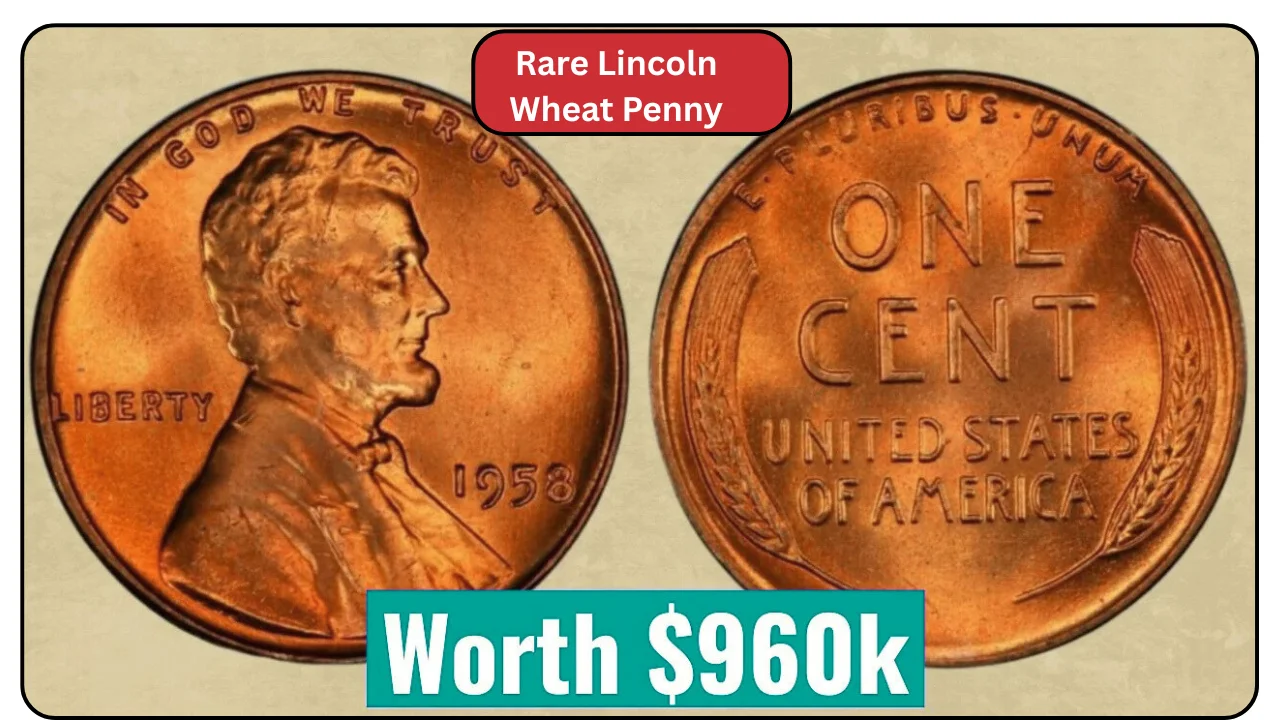Imagine finding a penny in your pocket worth nearly a million dollars! The Lincoln Wheat Penny, a small coin with big potential, has captivated collectors for decades. Some rare versions fetch staggering prices at auctions. Could you have one? Read on to uncover the history, value, and tips for spotting these treasures.
What Is a Lincoln Wheat Penny?
The Lincoln Wheat Penny, or “Wheatie,” is a U.S. one-cent coin minted from 1909 to 1958. It features Abraham Lincoln’s portrait on the front and two wheat stalks on the back. Designed by Victor David Brenner, it’s a beloved piece of American history, cherished by coin collectors worldwide.
The History of the Lincoln Wheat Penny
Introduced in 1909 to mark Lincoln’s 100th birthday, the Wheat Penny was the first U.S. coin to feature a real person. Initially, Brenner’s initials (VDB) appeared on the reverse, causing controversy. Some 1909 coins with “S” (San Francisco) and “VDB” are now ultra-rare. During World War II, copper shortages led to steel pennies in 1943, but a few bronze errors slipped through, becoming legendary. By 1958, the design switched to the Lincoln Memorial, ending the Wheat Penny era.
Why Are Lincoln Wheat Pennies Valuable Today?
Most Wheat Pennies are worth a few cents, but rare ones, like the 1943 bronze or 1909-S VDB, can fetch hundreds of thousands. Rarity, condition, and minting errors drive value. For example, a 1943-D bronze penny sold for $840,000 due to its scarcity. Collectors prize these coins for their historical significance and potential investment returns.
How to Spot a Rare Lincoln Wheat Penny
You could be holding a fortune! Here’s how to check your change:
- Check the Date and Mint Mark: Look under the date for “S” (San Francisco) or “D” (Denver). No mark means Philadelphia. Key dates include 1909-S, 1914-D, and 1943.
- Inspect for Errors: Look for doubled text (e.g., 1955 Doubled Die) or unusual metal (e.g., 1943 bronze).
- Test the Metal: Use a magnet. Steel pennies stick; bronze ones don’t.
- Examine Condition: Uncirculated coins with sharp details are worth more.
If you suspect a rare find, consult a professional grader like PCGS or NGC.
| Key Date | Mint Mark | Estimated Value (Mint Condition) |
|---|---|---|
| 1909-S VDB | S | $2,200 – $3,000,000 |
| 1914-D | D | $280 – $158,625 |
| 1943 Bronze | D | $100,000 – $3,300,000 |
| 1955 DDO | P | $500 – $114,000 |
Notable Lincoln Wheat Penny Records
Some Wheat Pennies have made headlines:
- 1943-D Bronze: Sold for $840,000, one of the rarest due to a minting error.
- 1909-S VDB: Auctioned for up to $3 million, with only 484,000 minted.
- 1955 Doubled Die: Fetched $114,000 for its dramatic doubling error.
- 1914-D: Sold for $158,625, a key date with low mintage.
| Coin | Auction Price | Year Sold |
|---|---|---|
| 1943-D Bronze | $840,000 | 2010 |
| 1909-S VDB | $3,000,000 | Unknown |
| 1955 Doubled Die | $114,000 | 2018 |
| 1914-D | $158,625 | 2018 |
Expert Tips for Collectors
- Start Small: Begin with common Wheat Pennies to learn the ropes.
- Use a Magnifying Glass: Spot subtle errors like doubled dies.
- Store Properly: Use coin albums to protect your collection.
- Authenticate Finds: Always verify rare coins with a reputable dealer.
- Join Communities: Connect with collectors online or at coin shows for insights.
Frequently Asked Questions
Q: Are all Lincoln Wheat Pennies valuable?
A: No, most are worth a few cents, but rare dates and errors can be worth thousands.
Q: How do I know if my penny is bronze or steel?
A: Use a magnet. Steel pennies stick; bronze ones don’t. Bronze 1943 pennies are rare.
Q: Where can I sell a rare Wheat Penny?
A: Try certified dealers, auction houses like Heritage, or platforms like eBay. Always authenticate first.
Q: What’s the rarest Lincoln Wheat Penny?
A: The 1943-D Bronze Penny, with only a few known, is the rarest, valued up to $3.3 million.
Conclusion
The Lincoln Wheat Penny is more than pocket change—it’s a piece of history with the potential for life-changing value. From the iconic 1909-S VDB to the elusive 1943 bronze, these coins spark excitement for collectors and casual finders alike. Next time you get change, take a closer look. You might just find a treasure worth $960,000! Share your finds, join a coin club, or explore more numismatic adventures to fuel your passion.

